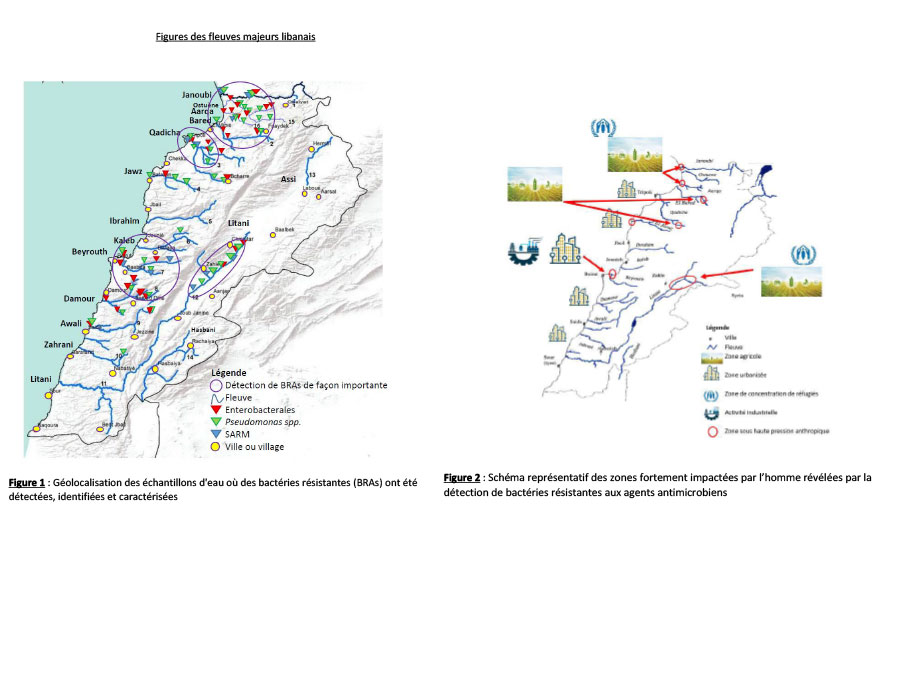For the first time in Lebanon, the Laboratory of Pathogens of the Faculty of Pharmacy (FP) of Saint Joseph University of Beirut (USJ) conducted a study to investigate the contamination of 12 major rivers in Lebanon by pathogens classified as critical by the WHO Global Priority Pathogens List. This study was carried out in collaboration of the RESINFIT Laboratory (UMR Inserm 1092) of the University of Limoges in France. Findings from this study have been presented at several international conferences and recently published in the scientific journal Antibiotics.
Identified pathogens are antibiotic and antiseptic resistant enteric bacteria and dangerous agents that cause complicated community-acquired and healthcare-acquired infections. By using standard laboratory techniques and advanced high throughput technology, a high level of pathogen and Antimicrobial Resistance Genes (ARGs) contamination of the Lebanese rivers was identified in some areas with high human impact.
These areas receive industrial discharges, treated and untreated wastewater and runoff from agricultural areas. Contamination of surface waters in Lebanon with bacterial pathogens and ARGs could be transmitted to humans across various interfaces. For example, irrigating plantation fields with contaminated river water is likely to contaminate agricultural products. Livestock in farming areas are in turn likely to be exposed to contamination. Moreover, the sea is the final destination of river water and would become a spillway for pathogens and ARGs.
This pilot study emphasizes the importance of regular monitoring of antimicrobial resistance, and its findings highlight the need for improved wastewater management. It is required to enforce strict and rigorous regulations governing wastewater treatment systems or wastewater reuse, as mandated by the European Parliament’s new EU 2020/741 legislation.
Read more: Les rivières du Liban contaminées par des bactéries
